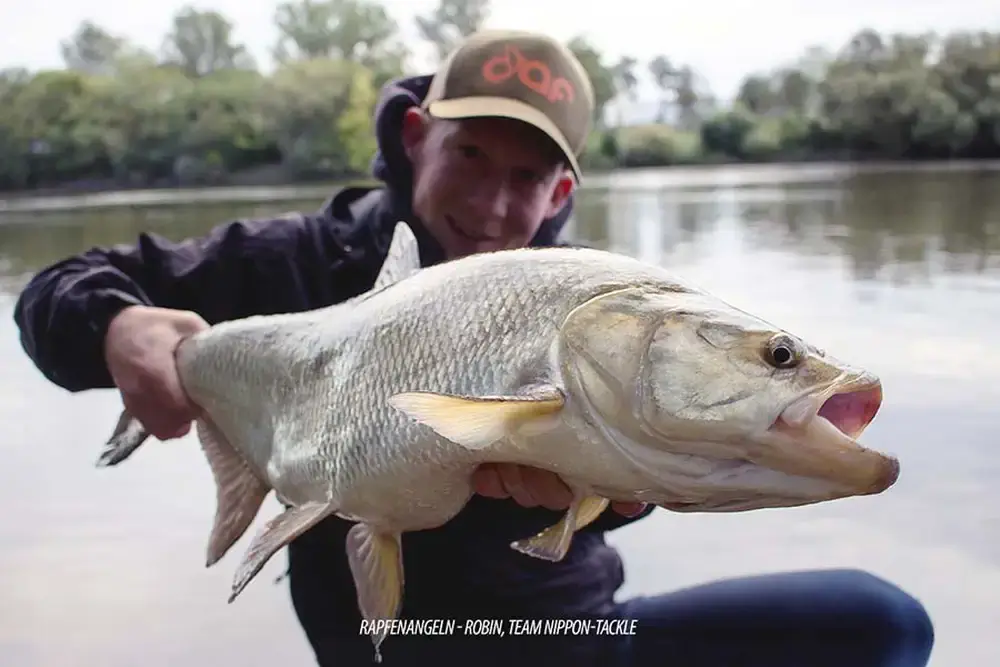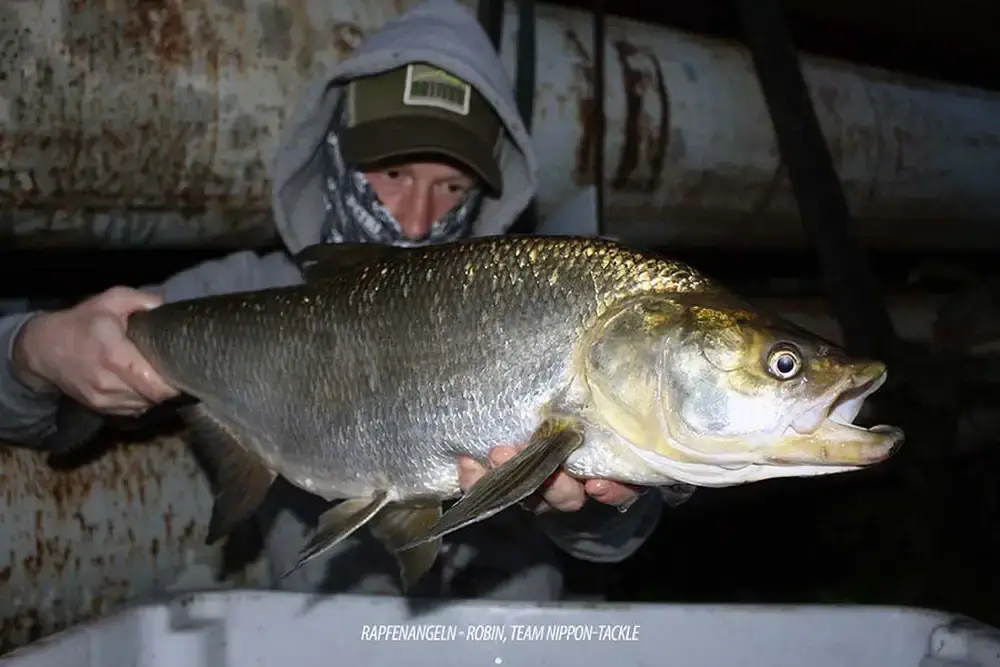Asp Fishing
Like the chub, the asp is a predatory cyprinid and is now one of the most popular summer fish. Fishing for them is becoming increasingly popular. And not without reason! They are now found in almost every water system throughout Germany and are reproducing rapidly.

Aggressive explosions of water, hardbaits flying over the water, crooked rods and screaming reels. The bites on sight when topwater fishing are addictive and when fishing quickly with wobblers, they shoot into the rod like an ICE. These are all reasons why it is worth dedicating a separate category to the Schied or asp, also known as Koksplötze in Berlin.
The right rod for asp fishing
A rod for asp fishing must have three basic characteristics: It must bring the artificial bait to the desired distance, it must be able to animate it and it must have enough power to pump the fish out of the current.
Depending on the width of the water, the asp rod should have a length of 190 cm to 240 cm. In most cases, you are well equipped with this. If you are fishing on a large river with a strong current and can expect to catch good fish, you should choose an MH to H baitcast rod or spinning rod, as large fish are able to use their mass to their advantage in the current.
When topwater fishing, we often have to guide the stickbaits very quickly to attract enough attention in the mass of hatchery fish. We therefore need a hard, stiff rod (ex-fast/fast-taper) that transmits the short twitches directly without loss so that we can guide the stick in walk-the-dog style. Short rods up to 210cm and a casting weight of around 20gr are best suited for this.
For this reason, the rod and handle should be kept relatively short so that the twitches can be set well. If we have a very long rod and a lot of handle section out the back, we may not have enough room and in the long run it will be very tiring for our wrist. The characteristics of a rod for fishing with twitchbaits or sinking stickbaits should be similar. However, it doesn't have to be quite as hard as for topwater fishing with stickbaits.
Casting distance and a strong backbone
Asp can also be caught with crankbaits and lead-head spinners. As we use a steady retrieve for these, we need a softer rod that can absorb the strong vibrations and pressure of the baits (regular taper). It also has the advantage that it parries the bite well when an asp takes the hardbait at full speed with its feet. As we don't have to animate crankbaits with twitches, we can choose a longer rod. The main advantage of this is that we can increase our casting distance somewhat.
Sometimes casting range is the key word. As if the asp knew that they were in danger of encountering one of our hardbaits on our side of the river, they like to move to spots outside our normal casting range, especially in large industrial rivers. In such situations, it's worth swinging over to the sea trout area.
Here there are rods that are designed for casting distance and with which we can get on the nerves of the predatory shoals of asp. And if asp feel safe when predating, our bait doesn't have to run one hundred percent to persuade them to bite.
The right fishing reel for your asp rod
A 2500/3000 stationary reel is perfect for this. For high-speed fishing in midsummer, a high gear ratio is an advantage to avoid cranking up a wolf. Both PE and monofilament are suitable fishing lines, depending on your taste. With a load capacity of 4-7 kg, you are well advised in both cases. The setup is rounded off with an FC in 0.28-0.35 mm.
The asp is the classic surface predator in our country. That's why most anglers go after them with stickbaits. Sizes between 5-9cm are best. Outside the breeding season and in very turbulent water, we can also use slightly larger stickbaits. This is because an asp will only rarely notice a significant difference when fishing fast and in poor visibility.
Asp plugs - fast, faster, fastest - or slow-action?

However, asp can also be fished successfully with wobblers (hardbaits) outside the warm season. In some situations, it doesn't matter what shape / color / size a wobbler is. The asp will fill their bellies as if it were their last meal for the next few months. On other days, you can present them with all sorts of variations - they seem uncatchable. These are situations in which they are predating like mad, but have completely zeroed in on a certain size of breeding fish.
As many waters are now very clear again and the asp are subject to high fishing pressure, clear, natural colors adapted to the forage fish are best in such situations. In cloudy water, however, it is also worth using shock colors. The Firetiger model has proven to be catchy on many waters, especially at shallow depths.
In order to successfully pursue predatory cyprinids all year round, you need to know which forage fish currently make up the main prey. In most large industrial rivers, the bleak or the asp fry itself is the favorite food. For this reason, narrow hardbaits usually produce the best results.
Hatchery fishing time is asp time!
In late spring / early summer, the fry have just hatched and so tiny / small peaceful fish up to 5 cm make up the majority. Accordingly, small hardbaits are the order of the day. As the year progresses, the size of the bait increases with the fry. Until the fall, 7-9 cm hardbaits can be used to catch imitations of any fry.
As soon as it gets colder, you can also try larger plugs. The fry from the same year have grown up well and you will have no problem arousing the interest of asp with 12 cm. In order to be well prepared for the cold winter, asp, like all other predatory fish, want to fill their bellies. Until next spring, when the cyprinid spawning phase begins, asp will eat any size of fish.
Topwater fishing in the current - asp guaranteed!
High speed is usually the order of the day in summer. Therefore, a hardbait must have stable running behavior even at high speeds and sometimes strong currents. Flanking and other outgoing movements should be kept to a minimum. In many cases, it is worth incorporating a spin-stop, but a wobbler should have a suspending or floating action so that it does not disappear from the asp's upward field of vision.
For topwater lures, stickbaits with a tight walk-the-dog action are suitable, which maintain this action even with a fast leader and current. In the colder months of the year, larger plugs in mid-water and close to the bottom usually produce success. A somewhat calmer action than in winter is now the order of the day. The hardbait should already unfold its full action with a slow leader so that it can be leisurely licked through the hot area.